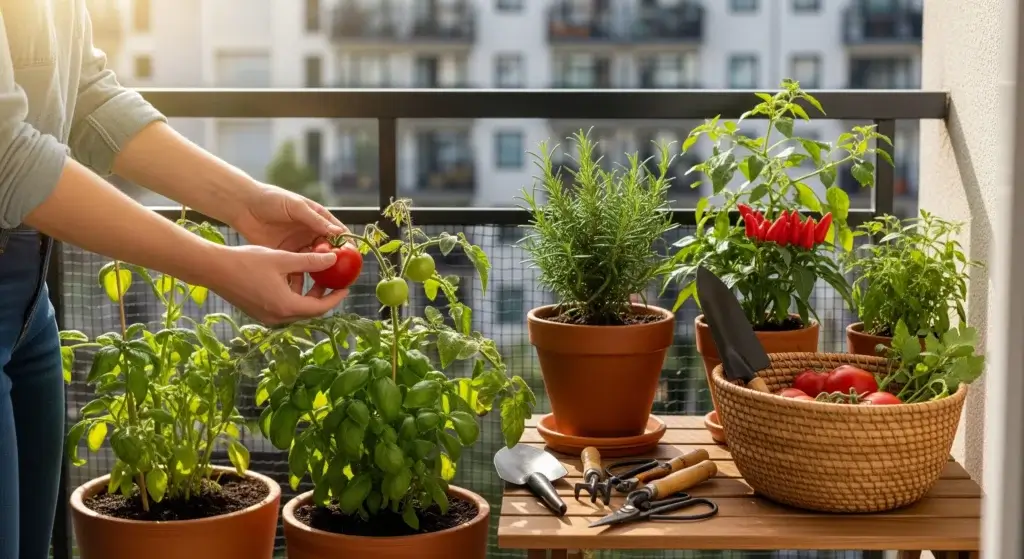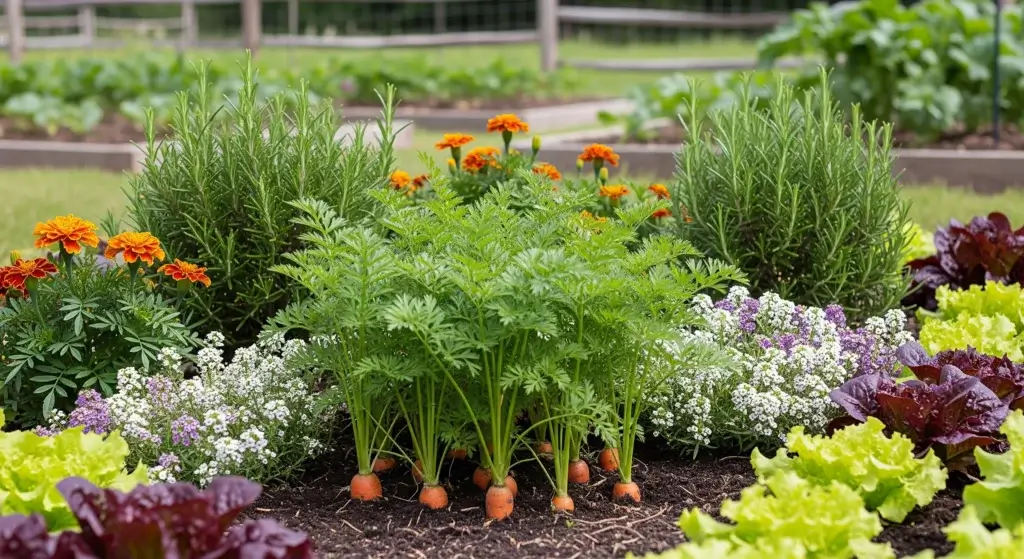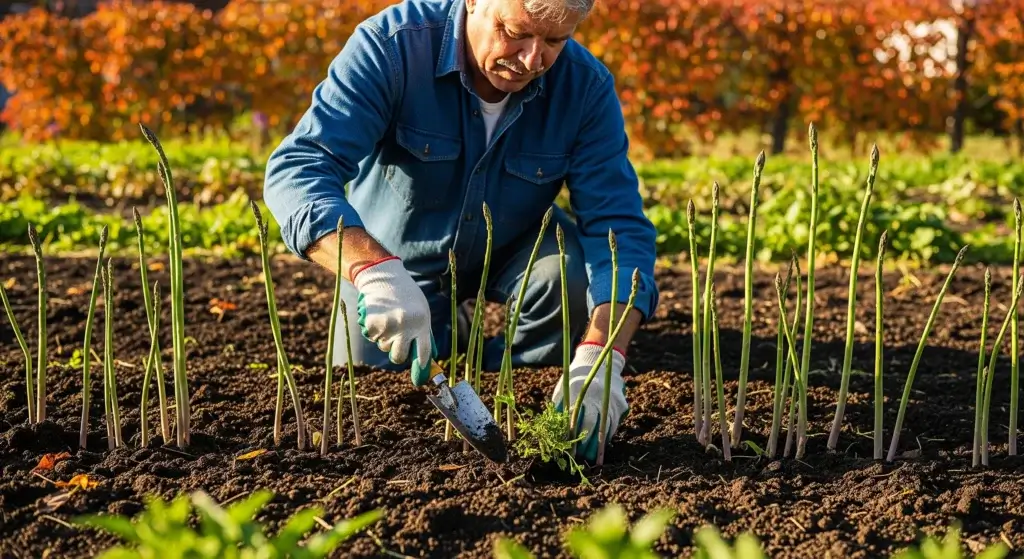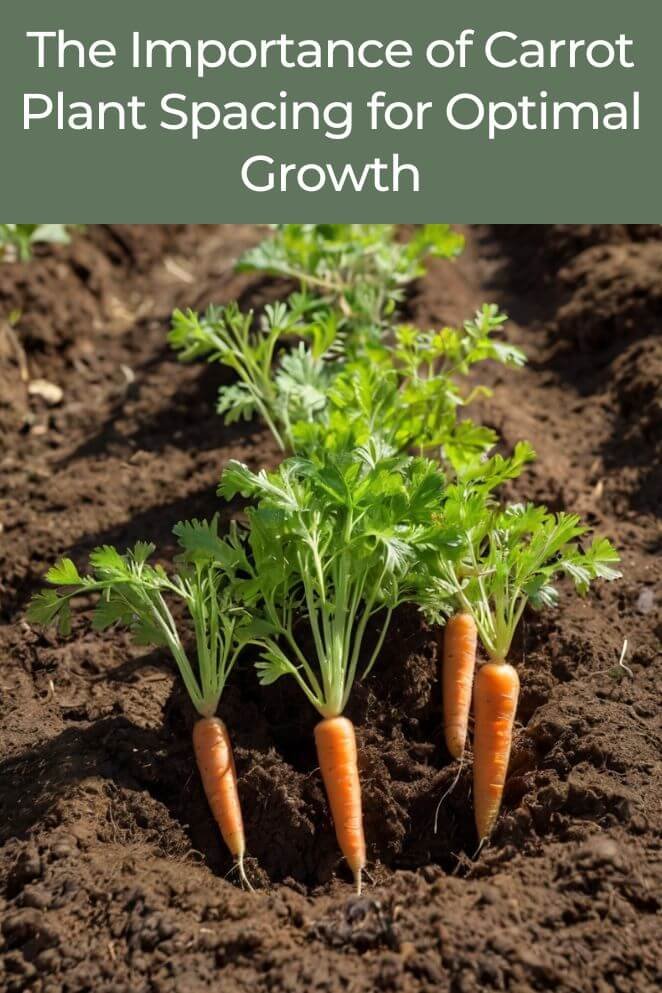
Carrots are a beloved root vegetable found in gardens worldwide, but their growth is highly dependent on proper spacing.
How you space your carrot plants can make or break your harvest.
Overcrowded plants produce stunted roots, while too much space wastes valuable garden area.
In this guide, we’ll dive deep into the science and art of carrot plant spacing, offering tips and techniques to ensure a healthy, bountiful harvest.
Why Proper Spacing Matters
Getting the spacing right when planting carrots isn’t just about following rules—it’s essential for healthy growth and a great harvest.
Here’s why:
Healthy root growth
Carrots need space to grow straight and plump.
When they’re too close together, they compete for nutrients and space, which can lead to small, twisted, or split roots.
Proper spacing ensures your carrots grow to their full potential.
- Read also: Carrot Plant Fertilization: Tips for Optimal Harvests for Gardener
- Read also: Understanding Why Your Carrot Leaves Are Turning Yellow
Preventing disease and pests
Good spacing improves airflow around your plants, which helps prevent fungal diseases like Alternaria leaf blight.
It also makes it harder for pests, like carrot flies, to hide and spread in dense plantings.
Weed control made easy
Properly spaced carrots create a leafy canopy as they grow, shading the soil and making it harder for weeds to take hold.
This means less competition for your carrots and less work for you pulling weeds.
Simpler harvesting
Harvesting is a breeze when carrots are spaced out correctly.
Crowded plants can get tangled, making it harder to pull them out without breaking the roots.
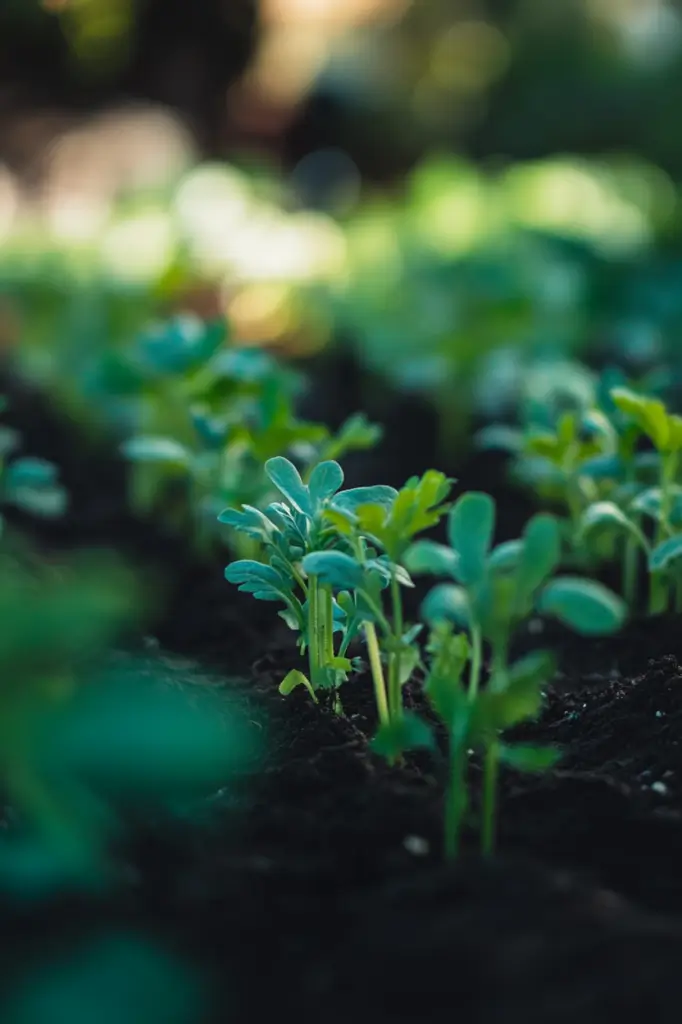
Determining the Right Spacing
Getting the right spacing for your carrots depends on a few key factors.
Here’s how to make sure your carrots have the space they need to thrive:
Choosing the right spacing for the variety
Carrot varieties come in all shapes and sizes, so their spacing needs vary:
- Short carrots (like Parisian): Only need about 1-2 inches between plants.
- Medium-sized carrots: Do best with 2-3 inches of space.
- Long varieties (like Imperator): Need the most room, about 3-4 inches apart.
Considering your soil type
The type of soil in your garden makes a big difference:
- Loose, sandy soil: Carrots grow easily here, so you can space them a bit closer.
- Clay-heavy soil: Roots grow slower, so give carrots more room to develop properly.
Adjusting for planting method
How you plant your carrots also affects spacing:
- Direct sowing: Thin the seedlings once they sprout to ensure proper spacing.
- Row planting: Keep consistent gaps between rows to make weeding and harvesting easier.
- Transplanting seedlings: Be gentle and space them out carefully to avoid disturbing the roots.
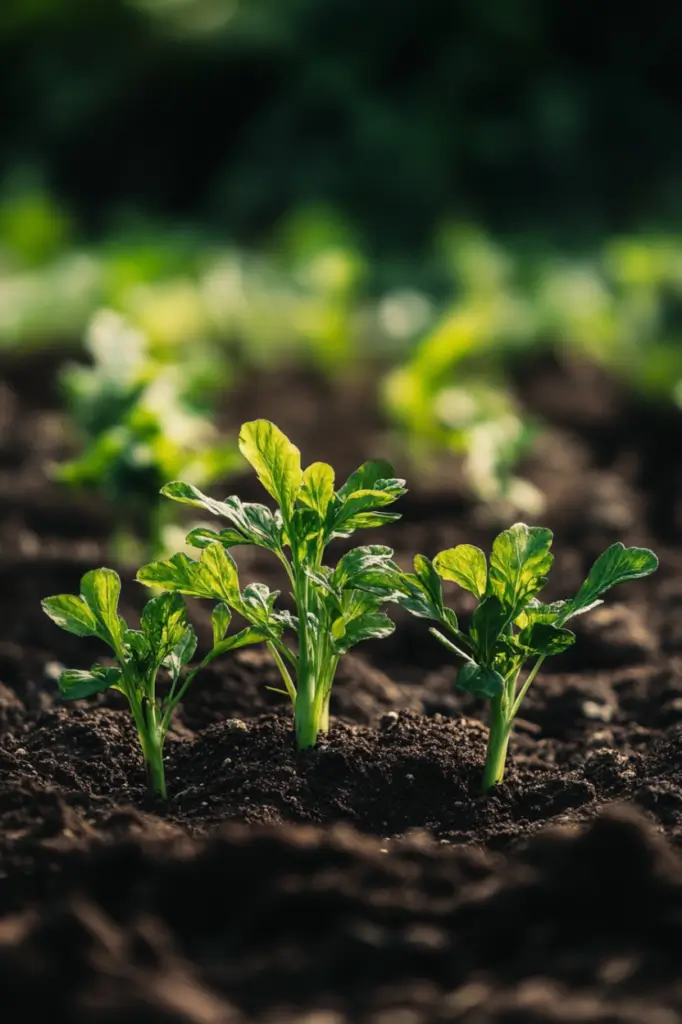
Spacing Techniques
Proper spacing is key to growing healthy and productive carrot crops.
Whether you’re directly sowing seeds or transplanting seedlings, it’s important to get the spacing just right to ensure your carrots have enough room to grow and develop without competition.
Direct sowing
Row spacing
When directly sowing carrot seeds, it’s important to give your plants enough room to spread out.
For most carrot varieties, rows should be spaced 12 to 18 inches apart.
This allows for good air circulation and prevents overcrowding.
If you’re planting multiple rows, be sure to leave enough space to easily access the carrots for weeding and harvesting.
Seed spacing
Sowing seeds directly in the ground requires attention to detail to avoid overcrowding as the seeds sprout.
You can use a few different methods to ensure proper spacing:
- Thinning: After seeds germinate, you’ll need to thin the seedlings to the correct spacing. Start by leaving the strongest plants, and remove weaker ones until the remaining plants are spaced about 2-4 inches apart (depending on the variety).
- Seed tapes: These are pre-spaced strips with carrot seeds embedded in them, making it easier to sow your seeds at the correct distance.
Transplanting
If you’ve started your carrot seeds indoors or purchased seedlings, transplanting them into the garden requires careful attention to spacing.
Spacing guidelines
For transplanted carrot seedlings, the spacing is similar to what you’d use for directly sown seeds but with a slight variation.
Each seedling should be spaced about 2-4 inches apart, depending on the variety.
Spacing between rows
When transplanting seedlings, be sure to space rows 12 to 18 inches apart to allow enough room for the plants to mature and for you to easily access them for maintenance and harvesting.
Proper row spacing also ensures good airflow, which is important for preventing diseases.
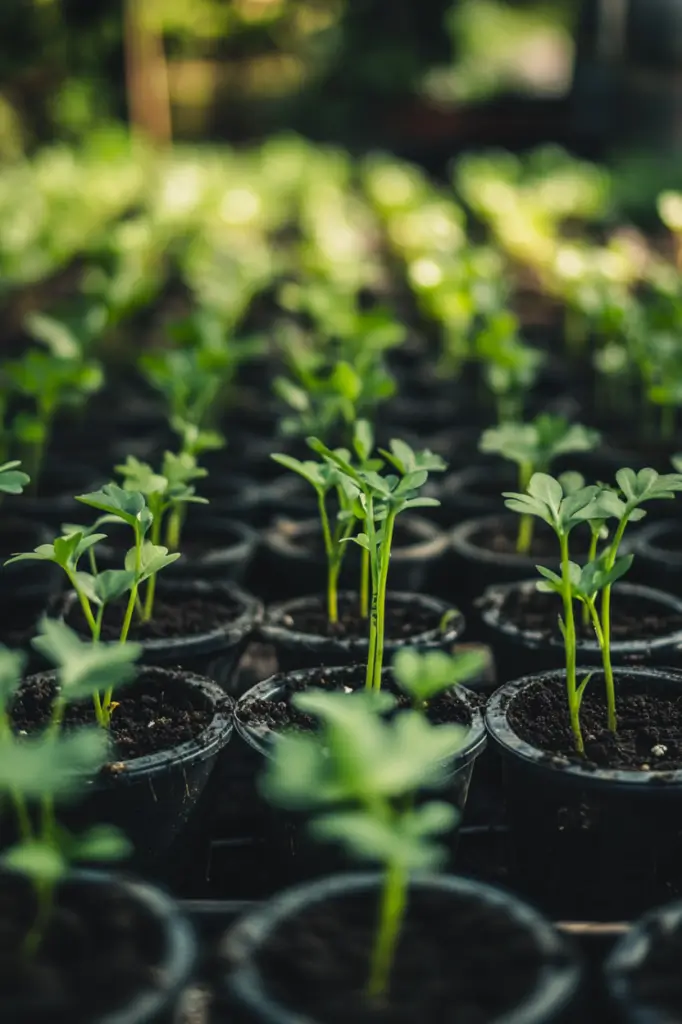
Troubleshooting Spacing Issues
Even with the best intentions, spacing issues can arise in your carrot garden.
Here’s how to identify and solve the two most common problems: overcrowding and undercrowding.
Overcrowding
What it looks like
Overcrowded carrots tend to have twisted, stunted roots that don’t develop properly.
You may also notice an increase in pests and diseases, as the lack of space makes it harder for the plants to get enough air circulation and nutrients.
What to do
The best way to fix overcrowding is to thin out your carrot seedlings early.
Remove the weaker, smaller plants to give the stronger ones the room they need to grow.
Aim for 2-4 inches of space between each carrot, depending on the variety.
Thinning early helps prevent the plants from competing for resources and ensures healthier, better-developed carrots.
Undercrowding
What it looks like
When carrots are spaced too far apart, you might notice wasted garden space and an increase in weed growth.
Without enough plants to cover the soil, weeds can easily take over and compete for the same nutrients and water your carrots need.
What to do
If you notice bare spots in your garden, you can re-sow carrot seeds in those areas to fill the gaps.
This helps maximize your space and reduces the risk of weeds taking over.
Just be sure to follow the proper spacing guidelines to avoid overcrowding the new seeds with the existing ones.
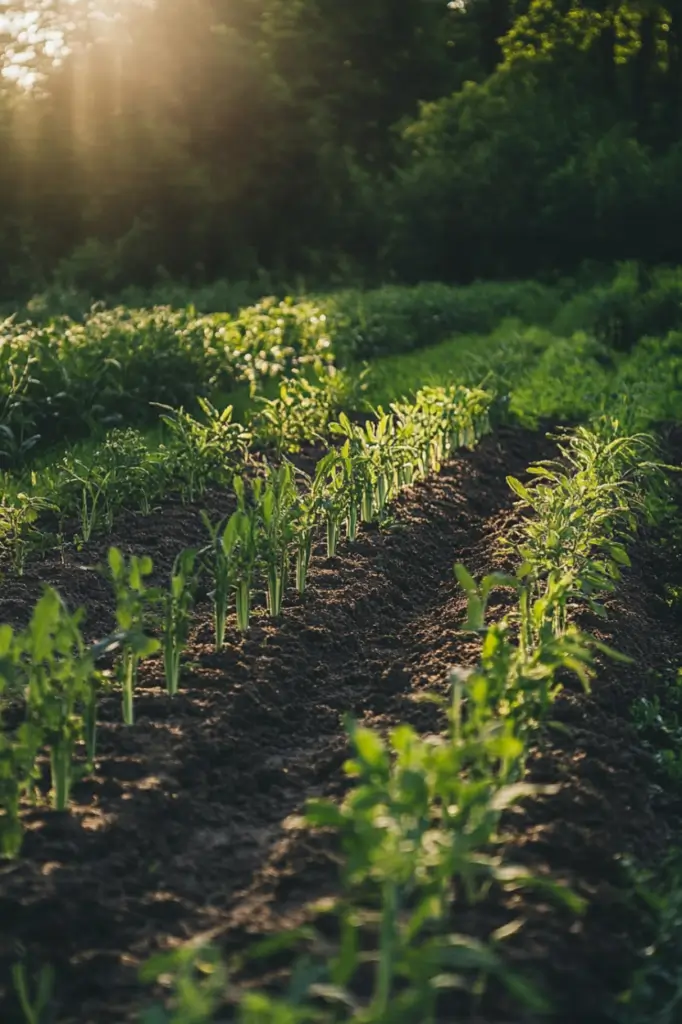
- Read also: From Seed to Supper: A Guide to Growing Carrots From Seed
- Read also: The Ultimate Guide: How to Grow Carrots in Containers
Final Thoughts
Spacing your carrots properly is more than just sticking to the rules—it’s about understanding what works best for your garden.
By considering the type of carrots you’re growing, the condition of your soil, and the planting techniques you use, you can enjoy a harvest of carrots that are not only tasty but also a pleasure to pull from the ground.
With a little care and attention, your garden can thrive and reward you with delicious, homegrown produce!

